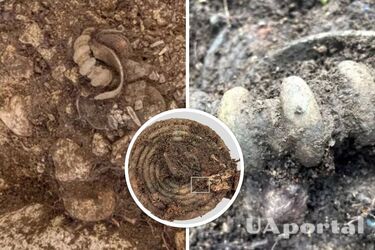Early Iron Age burial site containing rare artifacts discovered in Austria (photo)

Archaeologists from the Natural History Museum of Vienna (NHM) have made an incredible discovery during ongoing excavations in the Halstatt region of Austria. In this region, known for its salt production and the Halstatt culture of the Iron Age, scientists have discovered an early Iron Age cremation cemetery containing some unique finds.
One of the most impressive finds is a cremation grave with well-preserved bronze funeral gifts. However, a big surprise for the researchers was the discovery of rare textile fragments. During the expert search for metal artifacts, archaeologists noticed very well-preserved remnants of fabric, which became the first archaeological evidence of the use of textile bags for burying cremated remains.
Read also: Fossils of prehistoric snakes 6 thousand years old found in China (photo)
An early Iron Age cemetery in Halstatt was already discovered in 1846, but new excavations are being carried out by NHM archaeologists as part of an ongoing excavation campaign. According to the researchers, the discovery of a clearly recognizable grave pit is particularly important, as the area has been the subject of research in the past, but the question of the construction of burial grounds has not been studied in detail.
Other finds in the grave included a ribbed wrist ring, spirals of fine wire, a bronze blade with traces of a wooden handle, and a piece of iron lead identified as a belt fastener. All of these items were carefully packed in the grave, and only when they were opened were they examined and examined, which made it possible to find traces of textiles on the bottom of the spiral disks.



The researchers see the discovered artifacts as evidence of a new form of burial, where cremated remains were placed in a textile bag and spiral disks were used as covering materials. The famous use of textiles in burials is an important addition to our knowledge of the Halstatt Iron Age culture.
In addition, during the excavations, archaeologists also found animal bones, which probably served as food for the afterlife, as well as damaged objects such as a bronze knife blade and a piece of sheet iron, which may be symbolic offerings. These findings indicate the ritual significance of the burial and specific practices related to death.
Research on the Iron Age cemetery in Halstatt is still ongoing, and archaeologists hope to gain more answers about the life and rituals of the Halstatt culture. Thanks to modern excavation methods and documentation, these discoveries will help expand our understanding of the past and cultural heritage of this ancient people.
As a reminder, the site of the largest naval battle was found in Sicily: a vivid testament to the bloody war between Rome and Carthage.
If you want to get the latest news about the war and events in Ukraine, subscribe to our Telegram channel!
